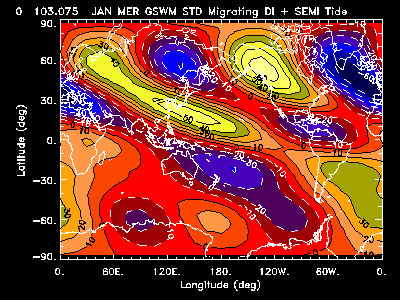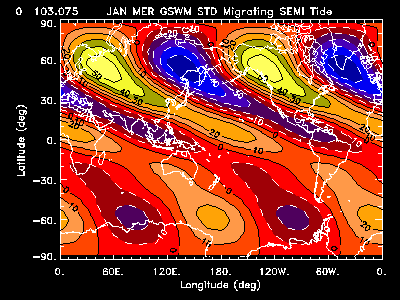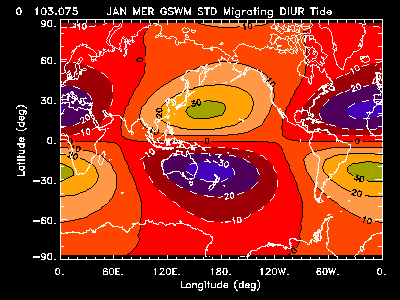
Animation cycles three times (three solar days). [ESC] to stop, Reload to replay.

This animated wave is the sum of the semidiurnal (below, left, shown at time=0) and diurnal (below, right, shown at time=0) meridional waves at 100km altitude.


The animated contour plot shows the sum of the meridional (northward) diurnal and semidiurnal tidal harmonics in January at 100km altitude, as a function of latitude, longitude, and local time. Dashed lines and blue colors indicate southward winds.
This view shows that the migrating tide does not change with longitude, but repeats the same pattern at each longitude over time (alternatively, it changes in time exactly the same way at each longitude). The wave propagates westward.
The four maxima (two positive, two negative) of the semidiurnal wave dominate this combination of harmonics near the north pole, while in the low southern latitudes the two waves cancel over half the globe, but show an enhancement of one of the sets of diurnal peaks over the other half.
The "top view" at 100km of the April semidiurnal meridional winds shows the two cycles of the semidiurnal tide in animation, or the single diurnal cycle.